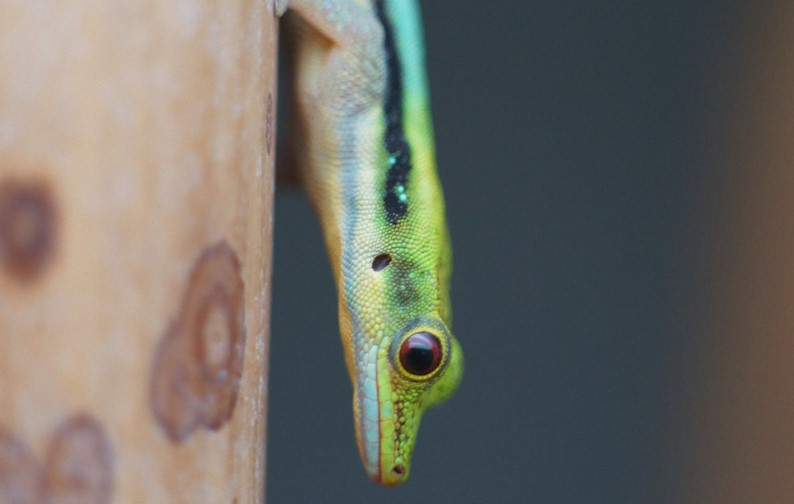The Yellow-headed Day Gecko (Phelsuma klemmeri) is a species of lizard found in Madagascar. They are known for their distinctive bright yellow heads and bright green bodies. The yellow-headed day gecko, also known as Klemmer’s day gecko, neon day gecko, or cheerful day gecko, is a small, endangered species of lizard that belongs to the Gekkonidae family.

They are arboreal, meaning they live in trees, and are active during the day. It is found in coastal forests, both dry and humid, and is known to live on bamboo. The species was named after German herpetologist Konrad Klemmer and have a turquoise blue back, light brown lower back, and a yellow head, with a black spot behind the eye and a black stripe extending to the rear. Males have an orange color around their femoral pores, while females do not.
The gecko is diurnal and likes to bask, often living in small groups. They lay eggs in bamboo canes, which hatch after about 39 to 52 days and can live for up to 15 years when well cared for. The species is commonly bred in captivity, and it is unlikely that it is still wild-caught.







